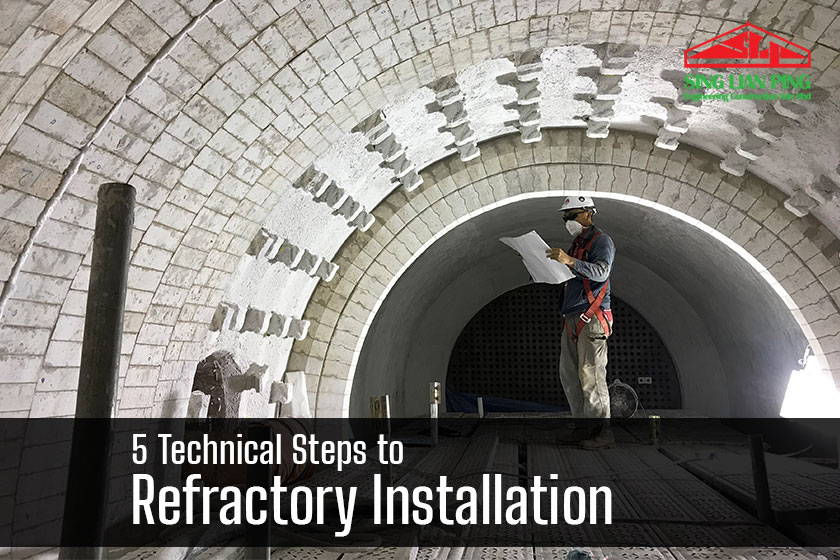Well now, if you ever got yourself into a project that needs handling high heat, like building up a kiln or even a little forge for blacksmithing, you’ll need something that don’t crack or melt when things get too hot. That’s where these things called refractory bricks come in handy. They’re the type that’s meant to withstand fierce heat, staying solid as a rock even when temperatures shoot up way higher than a kitchen stove.
What are Refractory Bricks?


Refractory bricks, sometimes folks call ’em firebricks, are special kinds of bricks made for resisting high heat. They ain’t like the regular building bricks you see on houses or chimneys. These bricks got a tougher body, won’t break or wear down when exposed to extreme temperatures. Now, they’re used a lot in places where high heat’s an everyday deal – factories, kilns, even those big fireplaces. These are the bricks that’ll hold firm when you’re cooking up heat hotter than the summer sun.
Making Refractory Bricks: The Raw Materials
Now, to make these refractory bricks, it starts with the raw stuff – that’s a big part of it. First thing, you got to pick materials that can take the heat, and here’s what usually goes in:
- Fireclays: These clays are real special, got aluminum silicates in ‘em, and help the brick stay in shape even with high temperatures.
- Bauxite: This is a rock rich in aluminum oxide. It adds strength to the brick, and let me tell you, it’s what helps those bricks stand up to fire like champions.
- Silica: Comes from sand or quartzite, and it brings a whole lot of heat resistance too. Silica’s known for handling temperatures without cracking.
- Magnesia: Comes from stuff like magnesite or dolomite. This one here is another toughie, adding to the brick’s power to resist heat.
- Chromite: Now, this one’s sometimes added when extra strength is needed, especially in industries where temperatures just skyrocket.
The Steps to Make Refractory Bricks
Once you got the materials sorted, it’s time to make these bricks. Now, this ain’t no quick process, but step by step, here’s how it’s done:
1. Preparing the Raw Materials


First thing, all the materials go through some prep – fireclay, bauxite, silica, magnesia, and any others get crushed down and batched up in the right amounts. Each bit has to be measured real careful, or else the bricks just won’t come out right. The mixture has to be just so.
2. Mixing and Molding
Next, all them materials get mixed together with water. They blend it good until it’s a bit like a thick dough. This mixture then goes into molds that’ll shape the brick. Molding is important here, and the molds need to be just the right size and shape. After shaping, the bricks sit out to dry for a bit, to get rid of excess moisture.
3. Drying the Bricks
Drying might sound simple, but it’s a long process. These bricks need time – you got to let them dry real slow. A bit like baking bread, rushing it will ruin the whole thing. If there’s too much water left, they’ll crack when fired up, and nobody wants that.
4. Firing Up the Kiln


Once the bricks are dry, they go into a big ol’ kiln, where temperatures get sky-high. This firing process makes the bricks real tough and ready for action. The kiln is fired up gradually, taking the bricks through lower temps first and then real high – that way, they get their strength without breaking. After firing, they get cooled down, checked over, and then they’re ready for packing.
Where Do You Use Refractory Bricks?
These refractory bricks ain’t just for show; they’re made for heavy-duty work. Folks use ‘em in kilns, furnaces, those big industrial ovens where steel and glass get made. You’ll find them in smelters, where metals are melted down, and in places where they do a lot of work with fire. Even in backyard forges, they’re used to keep heat contained, giving folks a safe, strong setup for high-heat work.
Picking the Right Bricks
Now, there’s different types, and if you’re thinking of getting yourself some, know what you need. Some are heavy bricks, meant to take a lot of direct heat. Others are lightweight, and those ones are good for insulation. For most home projects or little forges, those standard firebricks do just fine. But for the real big industries – they’ll need the heavy, dense ones, built to last.
Benefits of Using Refractory Bricks


Can’t end this without saying – these bricks, they save folks a whole lot of trouble. Here’s a few benefits:
- High Heat Resistance: Regular bricks can’t stand up to heat, but these can.
- Long-Lasting: They’re durable, won’t wear down easy, even after repeated high temperatures.
- Energy Efficient: They keep heat in, which means less fuel is needed in a furnace or kiln, saving money in the long run.
- Safety: They contain heat, reducing the risk of fire hazards.
Wrapping It Up
So there you have it. Refractory bricks might look like any other brick, but don’t be fooled – they’re made tough as nails to take on the heat. They’re important for anyone working with high temperatures, and if you’re getting into any heat-heavy projects, these bricks are a good friend to have. Just remember, it’s all about choosing the right type for the job, prepping it well, and handling it with a bit of patience.
Tags:[refractory bricks, firebricks, high heat bricks, kiln bricks, refractory materials]


